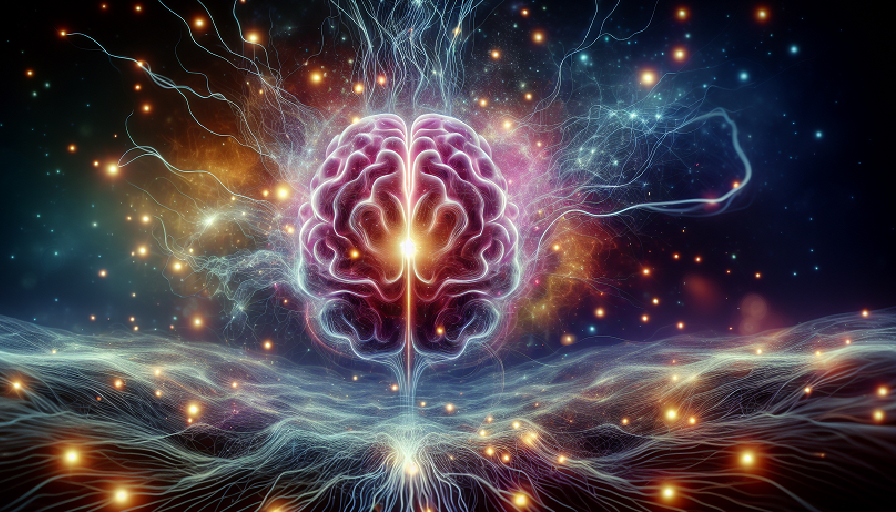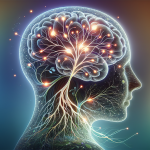
When people think about fitness, they imagine toned arms, six-packs, and cardio conditioning. But few realize the brain responds to training too—growing stronger, faster, and more resilient with the right workouts. Yes, we’re talking about real gains in gray matter—the neural tissue responsible for muscle control, memory, emotions, and decision-making.
It’s not just abstract improvement either. Brain imaging studies show that specific activities can actually increase gray matter volume in critical areas, enhancing both mental and emotional performance. Whether you’re looking to fight off brain fog, sharpen your thinking, or age with grace, the right brain-focused exercises can help you get there.
What Is Gray Matter—and Why Does It Matter?
Gray matter refers to regions of the brain rich in neuronal cell bodies. These areas are involved in sensory perception, muscle control, memory, emotions, and self-regulation. It’s distinct from white matter, which helps different parts of the brain communicate with one another via neural pathways.
The amount and density of gray matter in certain regions can strongly influence how well we perform mentally. For example, more gray matter in the hippocampus is linked to better memory. In the prefrontal cortex, it’s tied to emotional regulation and planning. Unfortunately, gray matter volume tends to shrink with age—unless you actively work to preserve and grow it.
Gray Matter and Neuroplasticity
One of the most hopeful discoveries in neuroscience is that the brain remains plastic—capable of change—well into adulthood. Neural pathways can be strengthened, new neurons can form in certain areas, and gray matter can grow with consistent mental and physical engagement.
The Brain Gym: Physical Activities That Bulk Up Your Brain
Physical exercise isn’t just good for the heart or waistline—it’s one of the most potent drivers of brain growth. Here’s how to move your body to strengthen your mind.
1. Aerobic Exercise
Running, cycling, swimming, and dancing all increase oxygen flow and stimulate the release of brain-derived neurotrophic factor (BDNF)—a protein essential for neurogenesis and synaptic plasticity.
- Key Gray Matter Target: Hippocampus (memory center)
- Research Highlight: A 2011 study in the journal PNAS found that older adults who walked for 40 minutes three times a week showed an increase in hippocampal volume after just one year.
2. High-Intensity Interval Training (HIIT)
Short bursts of intense effort followed by recovery can improve executive function, attention, and even structural brain changes. HIIT is also associated with increased BDNF and dopamine production.
- Best For: People with limited time but high motivation
- Bonus: HIIT improves insulin sensitivity, which is directly linked to cognitive health
3. Coordination-Heavy Sports
Sports like tennis, rock climbing, or martial arts challenge both the body and mind. The need for quick decision-making, spatial awareness, and memory of movements boosts gray matter in motor and planning areas.
Even dancing has been shown to increase brain volume in regions related to rhythm, balance, and coordination.
Mental Workouts That Sculpt Your Neural Networks
Brains crave novelty and challenge. Just like lifting heavier weights builds muscle, increasing cognitive load builds neural strength. Here are proven mental activities that do more than just pass the time.
1. Learning a New Language
Language acquisition activates multiple brain regions—auditory processing, memory, speech production, and emotional regulation. Studies have shown that bilingual individuals have more gray matter in the left inferior parietal cortex and better cognitive flexibility.
2. Playing Musical Instruments
Music training is a full-brain activity. It enhances auditory cortex development, motor coordination, and even emotional processing. Long-term musicians often have larger corpus callosums and increased gray matter in sensorimotor regions.
3. Meditation and Mindfulness
Yes, sitting quietly can grow your brain. MRI studies have revealed that people who meditate regularly have thicker gray matter in the prefrontal cortex and anterior cingulate cortex—areas tied to decision-making, emotion regulation, and attention.
- Suggested Practice: Start with 10 minutes of focused breathing or body scanning daily
- Results: Changes have been observed in as little as 8 weeks of consistent practice
4. Strategy Games and Puzzles
Sudoku, chess, Go, and even well-designed video games can challenge working memory, planning skills, and pattern recognition. These games reinforce neural pathways and may help delay age-related decline.
Social and Emotional Exercises That Matter More Than You Think
Brains don’t thrive in isolation. Social interaction stimulates language, empathy, and emotional intelligence. Research shows that loneliness correlates with a faster decline in gray matter, especially in the hippocampus and prefrontal areas.
1. Meaningful Conversation
Complex dialogue—not just small talk—challenges your brain to think, process emotions, and respond intelligently. Storytelling, debating, and mentoring all qualify as brain-boosting social exercise.
2. Volunteering or Group Activities
Helping others lights up reward and empathy circuits in the brain while reinforcing a sense of purpose, which correlates with slower cognitive aging and better emotional regulation.
3. Emotional Journaling
Writing about your experiences or feelings strengthens the connection between memory and emotion-processing regions. It encourages clarity, reduces stress, and boosts long-term recall.
How to Build a Brain Exercise Routine
Like any good workout plan, brain training requires structure, variety, and progression. Here’s how to craft your personal brain gym regimen:
- Mix physical and mental: Combine aerobic activity with daily puzzles or language practice
- Commit to novelty: Introduce new challenges every few weeks—don’t stick to the same brain games forever
- Schedule consistency: Frequency beats duration. Ten minutes a day trumps an hour once a week
- Track progress: Use apps or journals to monitor improvement in focus, memory, or mood
Also, don’t underestimate the role of rest. Growth happens during recovery—whether it’s sleep, meditation, or downtime away from screens.
Bonus: Brain-Boosting Habits That Support Your Gains
Exercise alone won’t offset the effects of poor lifestyle choices. To maximize the benefits of your gray matter workouts, support them with these daily habits:
- Nutrition: Fuel your brain with omega-3s, leafy greens, whole grains, and polyphenols
- Hydration: Even mild dehydration can shrink brain volume temporarily and impair cognition
- Sleep: Prioritize 7–9 hours nightly; this is when the brain consolidates learning and flushes toxins
- Stress management: Chronic stress inhibits neurogenesis and shrinks hippocampal volume
Brains, Like Bodies, Thrive on Effort
The image of the brain as a fixed organ—set by genetics or age—is outdated. Science continues to reveal that mental fitness is not only possible but necessary. You don’t need to chase genius or become a memory champion. The goal is sustainable cognitive strength, emotional agility, and mental resilience.
So whether you’re lifting weights, learning jazz piano, journaling your thoughts, or mastering a new recipe in another language, you’re building something profound. Gray matter gains are real—and they’re within your reach, one rep at a time.


